
When you would like to be a successful product photographer creating images that stand out from the crowd is important. As an experienced product photographer, I know that aesthetic images convert online browsers into buyers.
How do you define aesthetic photography? The very essence of aesthetic photos is about bringing images alive and making sure they stand out from the crowd.
I am passionate about creating aesthetic pictures that make products more interesting. You really want your photographs to catch the eye both of your client and the person considering buying the product.
Let me give some easy-to-follow tips on how you can create aesthetic pictures to add to your photographer’s portfolio.
Table of content 📷
Using A Simple Composition
Using the Rule of Thirds
Leading Lines in Aesthetic Photography
Symmetry Matters
Complement Your Colors
Using A Prominent Subject
Using Shallow DOF
Finding Rhythm and Repetition
Work on Your Technique
The Editing Process
Lighting Matters
Your Portfolio and Your Platform
Final Thoughts
Think About Creating Pleasing Images
Both photos and product videos should please the eye of the person seeing them. As you become more experienced as a product photographer, you realize that not only one technique matters. There are many ways in which you can enhance and beautify an image.
Aesthetic refers to the appreciation of beauty. It is not only important in photography. Aesthetics also play a role when it comes to home design. You may have heard the term
“aesthetically pleasing.”
Experienced photographers use a variety of techniques when it comes to creating aesthetically pleasing pictures. Two factors that both play a vital role are symmetry and balance.
Scandinavians are very good at creating aesthetically beautiful living environments. Next time you are shopping for something for your home, check out photos of Scandinavian interior decorating tips. You will find IKEA photographers have mastered the art of aesthetic photography.
What Is The Difference Between Aesthetics and Style

Are a photographer’s style and aesthetics the same thing? When I first got into photography, I thought they were both the same. By studying the way my peers worked, I realized that the two are different.
Let me explain the difference between aesthetics and style.
A photographer’s style is mainly down to two things. Both equipment and working equipment play a vital role. For instance, the way one product photographer works with studio lighting can vary a great deal from another photographer. Over time, most photographers develop trademark features.
Okay, I have to admit there are times when aesthetics and style overlap. It happens in all creative arts. A friend of mine who is an artist says that both techniques and equipment play a role.
When you are a photographer or an artist, you have a style. It is this style that lets you achieve unique results. Aesthetics are best described as a signature. Just like with artwork, you will instantly recognize a certain photographer’s work.
All photographers work in different ways. I like to work with light, but I also like to use studio props to tell a story. Light and props are important to create an artistic flare which in turn influences the aesthetics of photography. When you achieve balance and symmetry, you can create beautiful aesthetic pics.
Why Does Photography Aesthetics Matter?
Once I realized how much aesthetics influenced my work, I set about creating my own aesthetic signature. I worked on it, and eventually, my clients recognized that I had my own unique aesthetic approach to the way I work.
As a product photographer, my photos are my products. Yes, I photograph other’s products, but I don’t think of them as my products. Instead, I think of them as my subjects.
It is a bit like when you work with live models, which I used to do before becoming a product photographer. Over time, both regular and new clients have started to recognize the aesthetics of my work.
I have learned that my style of photography fits into a certain niche. That does not mean I only photograph one particular type of product. As you can see from my website, I photograph a huge range of products.
It is important that a photographer’s aesthetic style and the client’s aesthetic style go hand in hand. That way, your clients are not going to be disappointed.
12 Aesthetic Photography Tips I Like
Yes, there are many different aesthetic styles. Let me give you creative and technical tips on how you can create your own aesthetic photos.
1 Using A Simple Composition
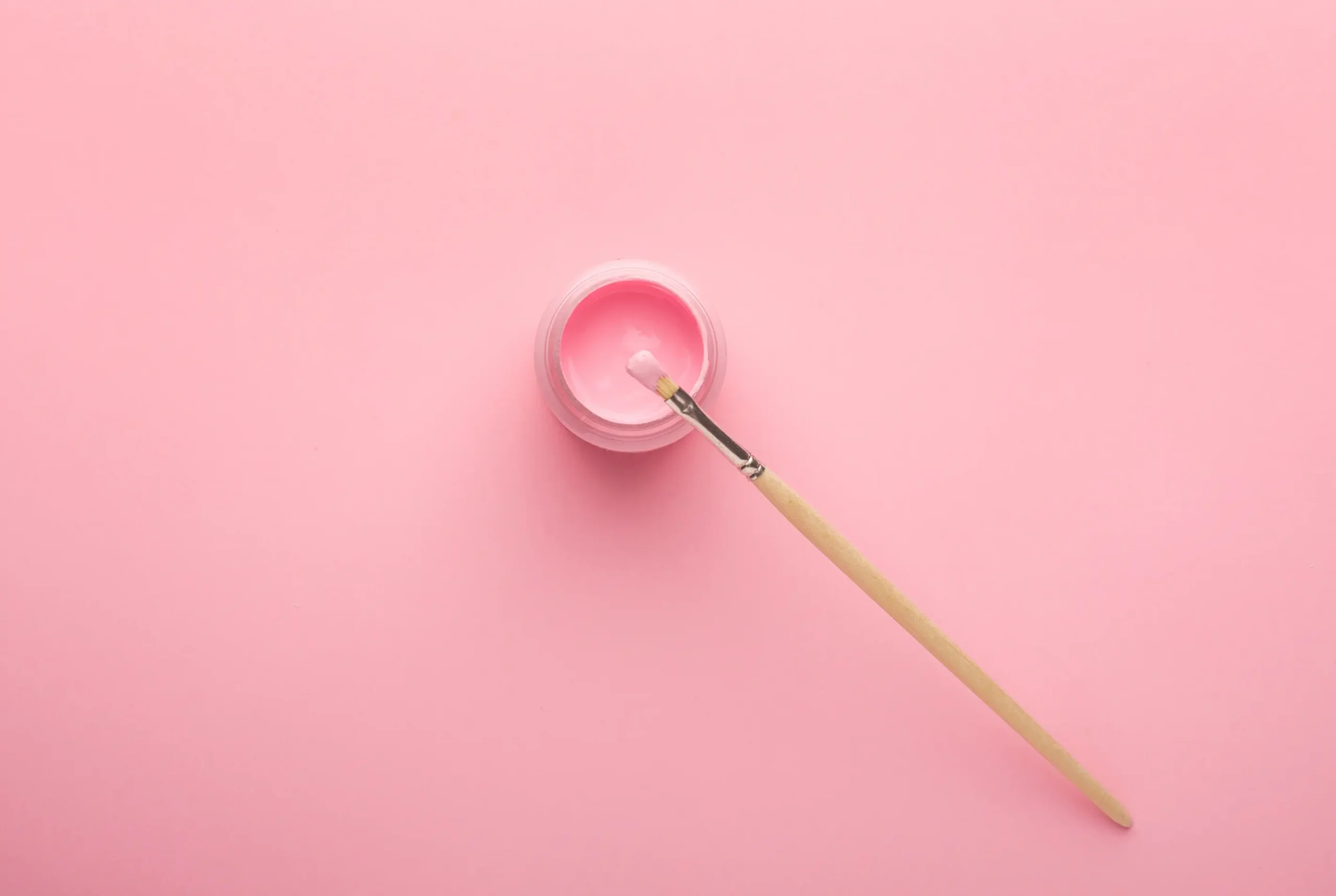
One of the best tips I can give you is to not overcomplicate a composition. If you make an image too complicated, the message is lost. As a guideline, I try not to use too many props.
When you use too many props and techniques, not only is the message lost – the product you are photographing fails to stand out as well. I always say to newbie product photographers that they should let the subject breathe.
You may have heard the expression less is more. When it comes to creating aesthetic pictures nothing is more true. I have clients who like to use a lot of props and different photographs technique. Most of the time, after I have explained the benefit of aesthetic photography, they see things my way.
Product photographers’ images should be clear and simple. They should deliver a message and tell a story. Street photographers and photojournalists create images that are full of drama and hectic environments. That never works in product photography as the message you are trying to convey is lost.
An aesthetic composition lets you see the photo as a whole story. As far as product photography goes, it is important not to distract from what really matters. In many ways, product photography is very much like framing a painting.
2 Using the Rule of Thirds
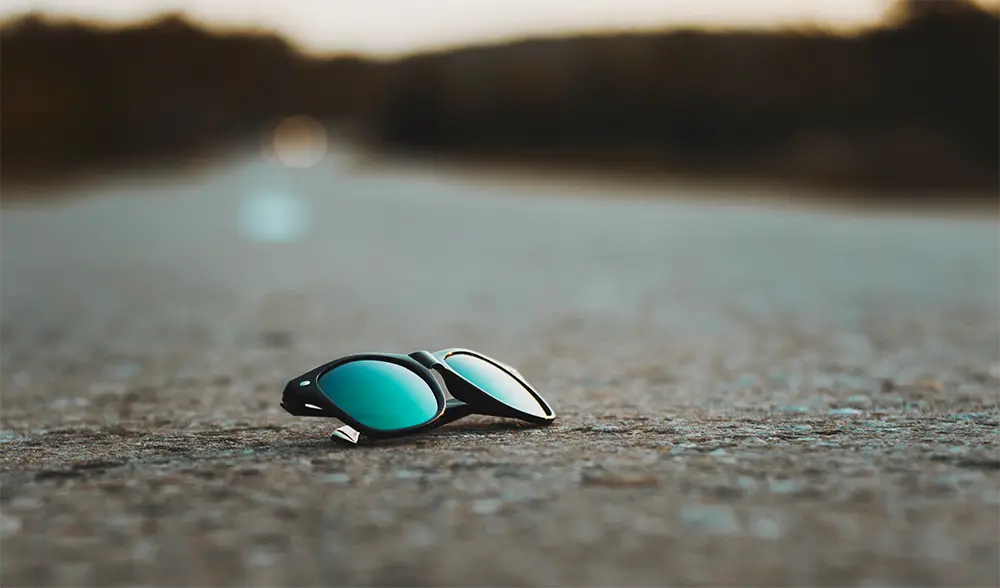
I have talked about the rule of thirds on my other blog.
The rule of thirds is super important. I would even go as far as to say it is critical when it comes to creating aesthetic photographs.
When you use the rule of thirds, you create a structure which is easy to see. In order to use the rule of thirds, you need to divide your frame into two vertical and horizontal lines.
Artists do this by dividing a canvas, photographers do this by diving the screen or frame. The end result is that you end up with nine evenly-sized squares.
The trick is now to use these nine squares to structure your image. This is the essence of composition in photography. A photo is created and composed by adding different points of interest.
The rule of thirds opens up what artists call negative space. Don’t be afraid of it. Instead, embrace it as negative space can speak a thousand words. Try this tip. Photograph a subject against a brick wall. Take a look at the negative space i.e. the brick wall. You will soon appreciate you have created an interesting negative space.
Most digital DSLR cameras have a grid setting that you can use. The lines appear in your viewfinder. You use them to compose your photo.
This is a good basis for aesthetic photography. I like to say that the rule of thirds keeps everything in order.
3 Leading Lines in Aesthetic Photography
Working with leading lines is another way of creating aesthetic pictures. One way of working with leading lines is to use the natural lines that appear in your viewfinder.
Natural lines appear almost everywhere. They are often used in macro photography to create interest.
What do you do if lines don’t exist naturally? When you work in a studio environment, it is true that lines may not exist. In that case, you can create them to make your photograph more aesthetically pleasing.
How do you do that? For instance, if you are selling products on Etsy, you can create lines by hanging them up. Set up a line and hang the products on the line. This works for clothes as well as other objects.
Hanging up clothes and apparel makes for an interesting photograph which is both stylish and aesthetically pleasing.
Why do lines work? The beauty of lines is that they “lead” the eye. You are directing the experience of the person looking at the photo by guiding the eye towards the subject. It is a fantastic way of telling a story and making a subject more appealing and interesting.
4 Symmetry Matters
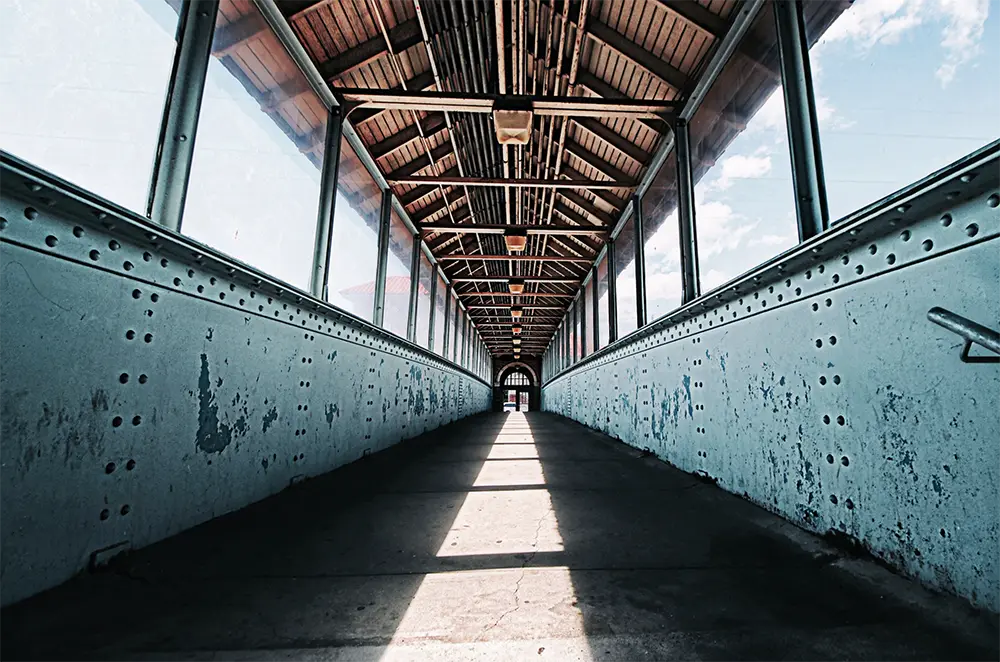
Our human brains like symmetry. That being said, we have started to realize animals like symmetry as well.
Symmetry not only makes a photograph appear more aesthetically pleasing, but it also triggers something in us well. Did you know that we remember things better when we see them displayed in a symmetrical way?
When it comes to product photography, creating a memory of a particular product or brand is essential.
Symmetry also creates a sense of harmony. But, what is symmetry?
Identifying patterns is what makes a photograph symmetrical. Nature is full of different patterns and shapes that remind us of things. Shapes can be either geometric or derived from angles.
You can create symmetry when you work under studio conditions. A water or mirror reflection enhances symmetry. Both are good sources when you work you work in a studio.
Applying symmetrical techniques gives you a very powerful image.
5 Complement Your Colors
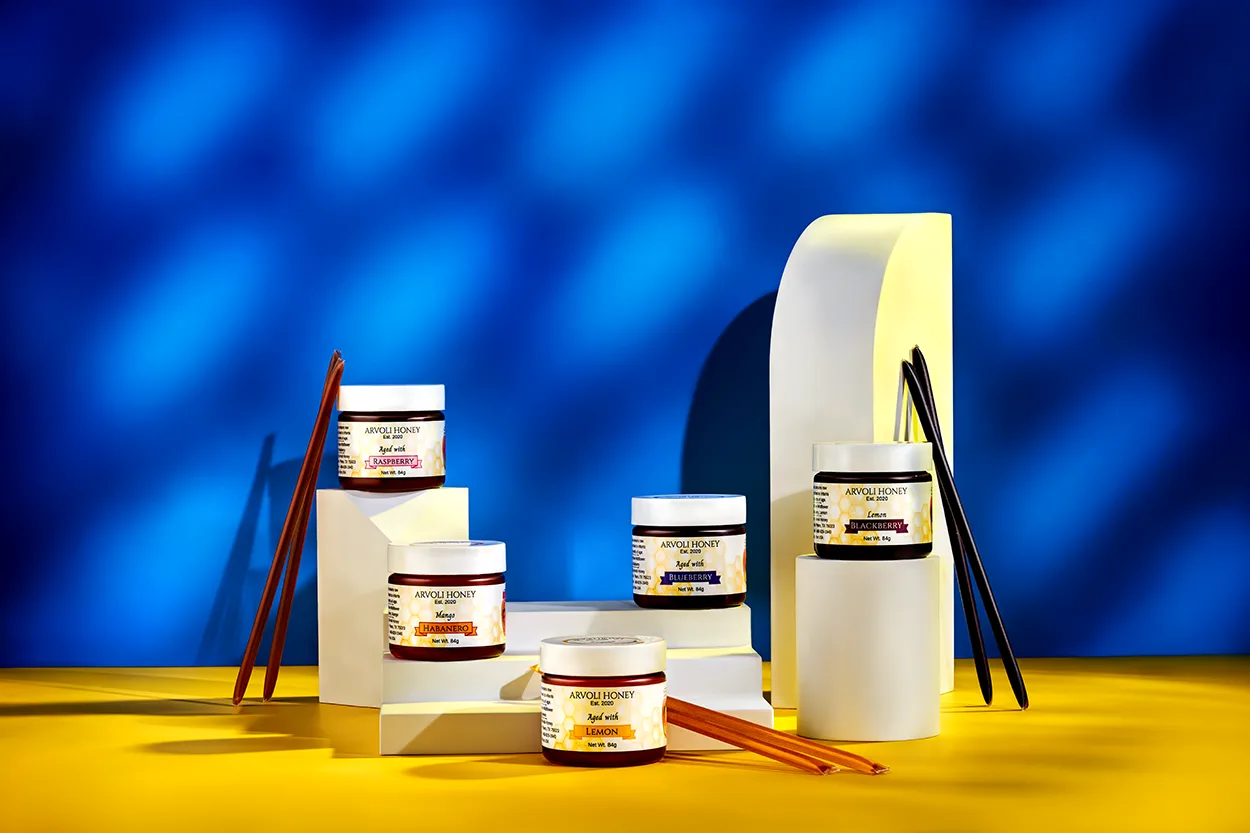
Have you heard of color therapy? Colors have a huge effect on the way we feeperceive things. I am going to talk more about color therapy on another page on this site.
As a photographer, you have probably seen the color wheel. Photographers are not the only professional group to use the color wheel. Interior designers and even gardeners refer to it as well.
Using color is another way of making your photographs more aesthetically pleasing. Once again, it is a way of creating harmony. Using both triadic colors and analogous colors work well. Your color choice depends on your subject.
Depending on how you use color, you can make it stand out or blend in. Props are a way of working with color. You can use plants or flowers that emphasize the color of products. If you are photographing skincare, they can even be used to express what is included in the product.
6 Using A Prominent Subject
Adding a prominent subject to your composition is another top tip.
How does a prominent subject help to make a photograph more aesthetic? First of all, it helps to create a relationship. This relationship can be between the main subject and the background.
White on white photography is actually a way of using a prominent subject. On this occasion, it is white which creates the relationship and displays the image clearly There are no distractions but you are still creating a relationship between the subject and the white background in the image.
Different shapes are another way of creating relationships in aesthetic photographs.
7 Using Shallow DOF
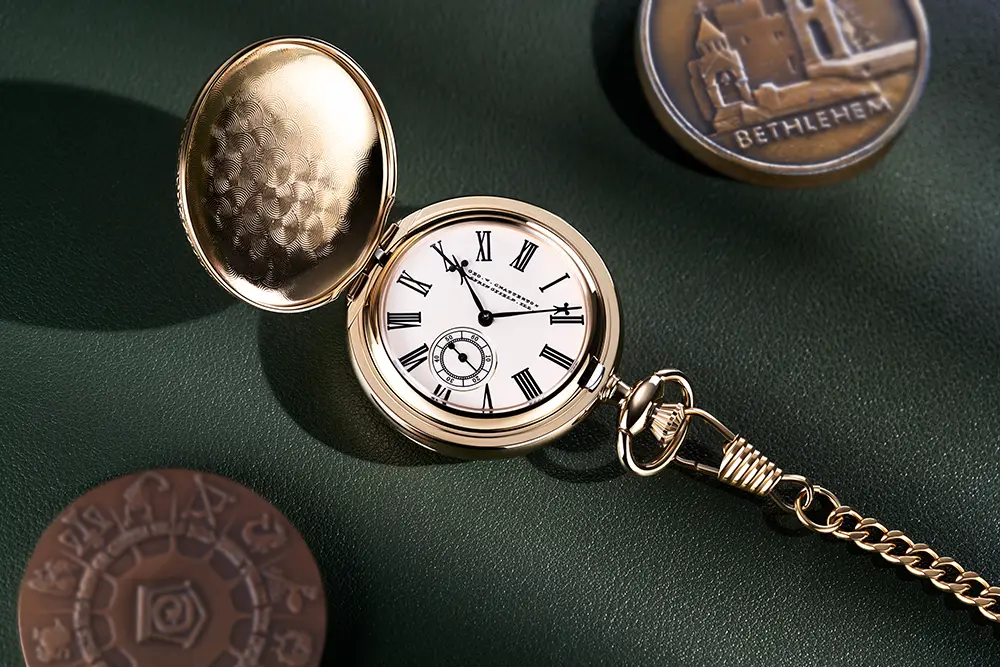
This photographic technique is perfect for highlighting the subject.
Depth of field allows you to control how much of the shot is in focus. You can have a large depth of field or a marrow one. A shallow depth of field focuses on a small area. This is a technique which is often used in product photography to focus on the finer details.
When you are photographing the working of an expensive watch, you can use shallow depth of field to display the interior of the watch or perhaps the hands.
The background is often blurred. In photography, this is called the bokeh effect. A dream-like effect is created when you use this technique.
If you have not worked a lot of depth of field, you should experiment with it before you start using the technique professionally. It can take some time to master.
8 Finding Rhythm and Repetition
Talking about rhythm and repetition when it comes to photography may sound a bit strange.
But, it would be fair to say that both can have an influence on your photography compositions. They apply to video as well as still photography. Rhythm and repetition help to create consistency
A line of trees or train carriages make excellent rhythm and create a sense of repetition at the same time. Remember what I talked about hanging products up on a line earlier? That is another way of creating repetition and rhythm.
9 Work on Your Technique
Working on your technique has a huge influence on creating aesthetic pics. The only way you can do this is by taking lots of photographs.
Thankfully, thanks to DSLR cameras this is so much easier. You don’t have to worry about developing a film which was costly.
Once you are happy with your camera’s settings, experiment and keep snapping away. You can delete the images you don’t like. Don’t forget that practising using software including Adobe is a good idea.
At some stage during your career as a photographer, you are going to have to get used to using photo editing software.
How do you know you are on the track? When you start liking your own images that is when you know you are on your way.
Not every photograph you take has to be of a product. Take your time and practise your skills in general. There are many online platforms where you can sell your photographs. When you put your photographs up for sale, you also get an idea of the images people like and buy.
10 The Editing Process
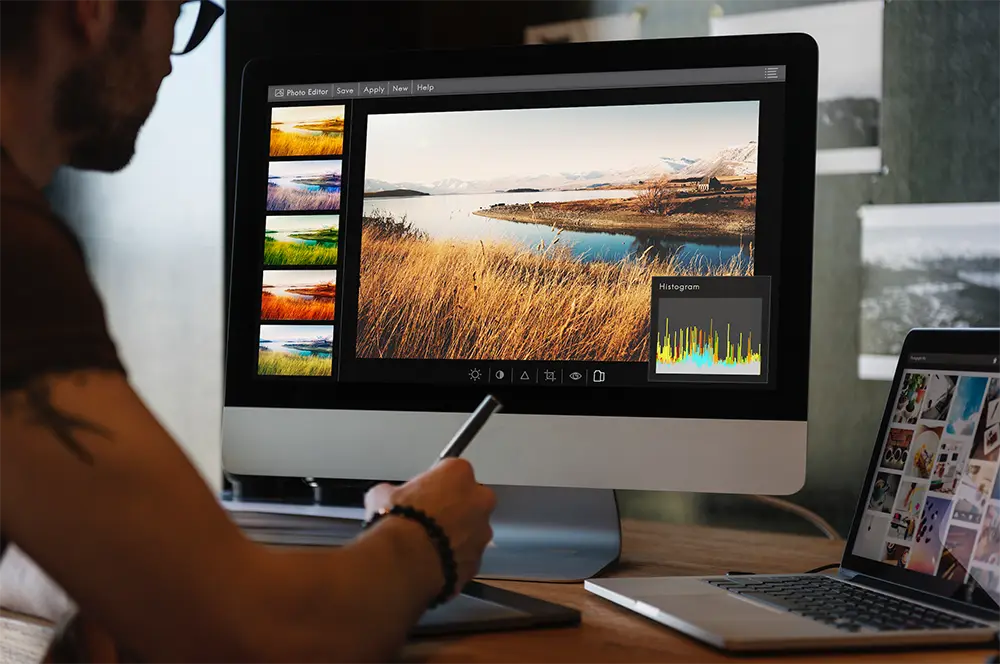
We have touched on this briefly.
The editing process is an essential part of creating aesthetic photographs. When you want to create your own unique style and aesthetic values, photo editing matters.
You can choose to edit as little or as much as you like. I always say to new photographers that taking a good-quality photograph is still important. There are photographers out there who snap away and do all of the work in photo editing. I am not one of those.
Thanks to photo editing programs such as Adobe Photoshop or others, you have a choice of how you would like to work.
11 Lighting Matters
Despite photo editing programs becoming more advanced, studio lighting and outside lighting matter.
I think that lighting is individual. Eventually, you will find what works for you. If you would like to create aesthetic photos outside, the golden hour is the perfect time to do so.
When you shoot in unnatural light, you have to put yourself in the cinematic photographer. You need to learn how to create natural aesthetic photographers in a studio environment.
Working with flash photography and studio lights is a challenge. There are so many different lighting techniques you can choose from.
12 Your Portfolio and Your Platform
Creating a personal portfolio lets you work on your entire range of photographs and photography techniques. It is part of the learning experience.
Once you have created a portfolio, you can step back and take a look at what is making your photographs aesthetically pleasing. Invite others to take a look. Don’t be afraid to ask for their opinion. Positive and constructive criticism help to make a better photographer.
Also, don’t forget to consider what platforms your photographs are going to be published on. You may have to take into consideration certain perimeters and dimensions.
Instagram and other social media all have their own ways of displaying images which means they want to control the dimensions.
Final Thoughts
Once you have learned to create aesthetic photographs in one genre, you can turn your hand to other forms of photography. It is a matter of practising to achieve perfection.
Both creativity and technique matter when it comes to good aesthetic pictures.
if you’re looking to increase your online conversion but still feel you are not sure where to start – check out these resources below:








